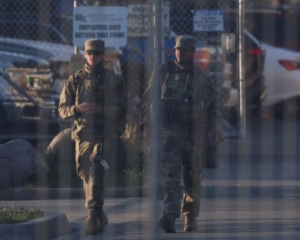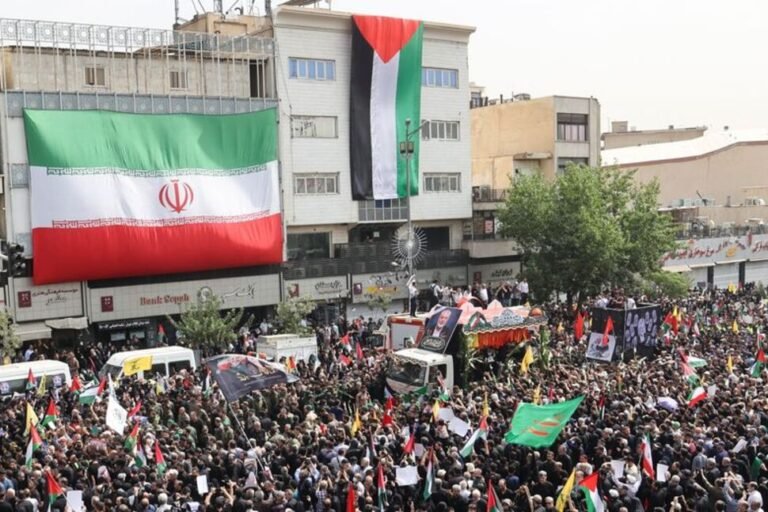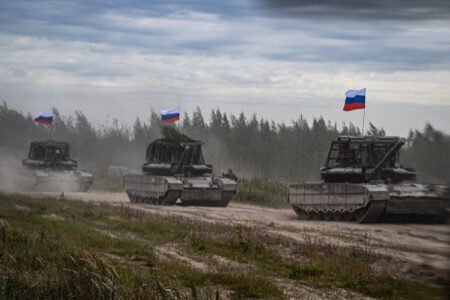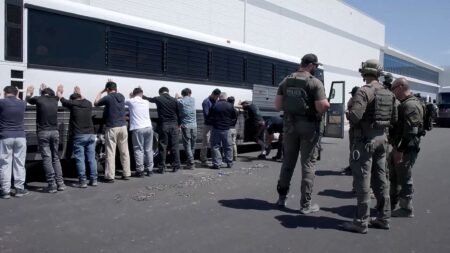Thousands of Iranians gathered in Tehran to honor 60 martyrs killed in recent Israeli airstrikes. The massive crowd, marching through the capital, turned the funeral into a protest. Chants of “Death to Israel” and “Death to America” echoed across the city. The funeral began in Enqelab Square and ended at Azadi Square, nearly 11 kilometers away. The event was marked by grief, anger, and a deep call for justice. Mourners carried banners with slogans like “Boom Boom Tel Aviv” to express their outrage over the killings.
Coffins wrapped in the national flag and portraits of fallen military leaders were carried through the streets. The mourners came from all walks of life. Many held signs that criticized the United States and Israel for their roles in the deadly airstrikes. The funeral honored both senior military officers and civilians. Among the dead was Major General Mohammad Bagheri. He held the second-highest military rank in Iran, just after the Supreme Leader. He was buried with his wife and daughter, who also died in the attack.
President Masoud Pezeshkian attended the ceremony. Many top military and political leaders joined him. The strong turnout from officials showed the seriousness of the loss. It also underlined the message of unity and resistance. The victims included IRGC commander Major General Hossein Salami, who died on the first day of the Israeli attacks. Mohammad Mehdi Tehranchi, a top nuclear scientist, and his wife were also killed.
In total, Iran paid tribute to 30 high-ranking commanders. Their deaths sparked nationwide sorrow and anger. People lined the streets, waving Iranian flags and chanting loudly. The funeral showed not just grief, but also a vow to respond to the attacks. The funeral took place on the second day of the Islamic month of Muharram. This month is deeply symbolic for Iranians. It marks the martyrdom of Imam Hussein and his 72 companions. Their sacrifice is remembered as a fight against injustice.
The timing added religious weight to the event. It reminded many of the long tradition of martyrdom in Iranian culture. For many, dying in defense of the homeland is seen not as a loss but as an honor. The concept of martyrdom is deeply rooted in Iran’s national identity. It has shaped how people react to war, aggression, and occupation. The images of the funeral reflected that deep cultural and emotional tie.
The Ministry of Foreign Affairs later released a statement. It said the funeral was more than a farewell. It was a message to the world. Iran, the statement said, had answered terrorism in its own language—through unity and strength. The ceremony was peaceful but firm. While the mood was somber, the chants were fierce. From start to finish, the crowd showed they would not forget or forgive the attack.
People came together as one voice. Their message was clear: Iran will not stand down. The march turned into a symbol of defiance, one that may shape future responses. This funeral, though filled with sorrow, was a powerful display of national resolve. The mourning crowd, the slogans, and the presence of leaders showed Iran’s stance clearly. The world watched as Tehran stood still, but strong.







